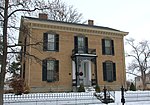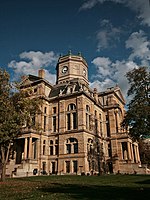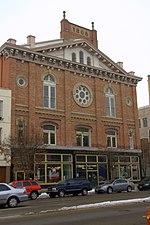Father Stephen T. Badin High School
1966 establishments in OhioBuildings and structures in Hamilton, OhioCatholic secondary schools in OhioEducational institutions established in 1966Greater Catholic League ... and 3 more
High schools in Butler County, OhioRoman Catholic Archdiocese of CincinnatiSisters of Notre Dame de Namur schools

Stephen T. Badin High School, (commonly known as Badin High School) is a Catholic high school of the Archdiocese of Cincinnati school system, serving grades nine through twelve in Hamilton, Ohio, United States. It is a comprehensive high school which admits students of all levels of ability.
Excerpt from the Wikipedia article Father Stephen T. Badin High School (License: CC BY-SA 3.0, Authors, Images).Father Stephen T. Badin High School
New London Road, Hamilton
Geographical coordinates (GPS) Address Website External links Nearby Places Show on map
Geographical coordinates (GPS)
| Latitude | Longitude |
|---|---|
| N 39.395277777778 ° | E -84.592222222222 ° |
Address
Father Stephen T. Badin High School (Stephen T. Badin High School)
New London Road
45013 Hamilton
Ohio, United States
Open on Google Maps










